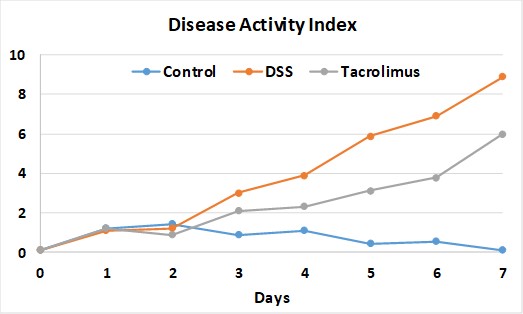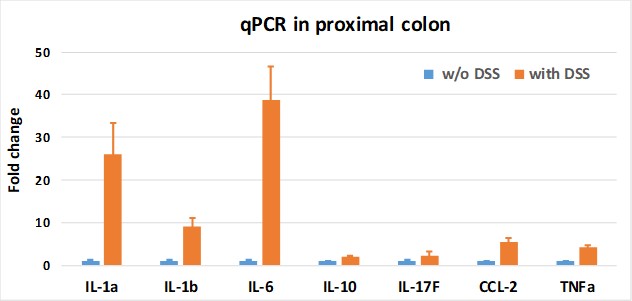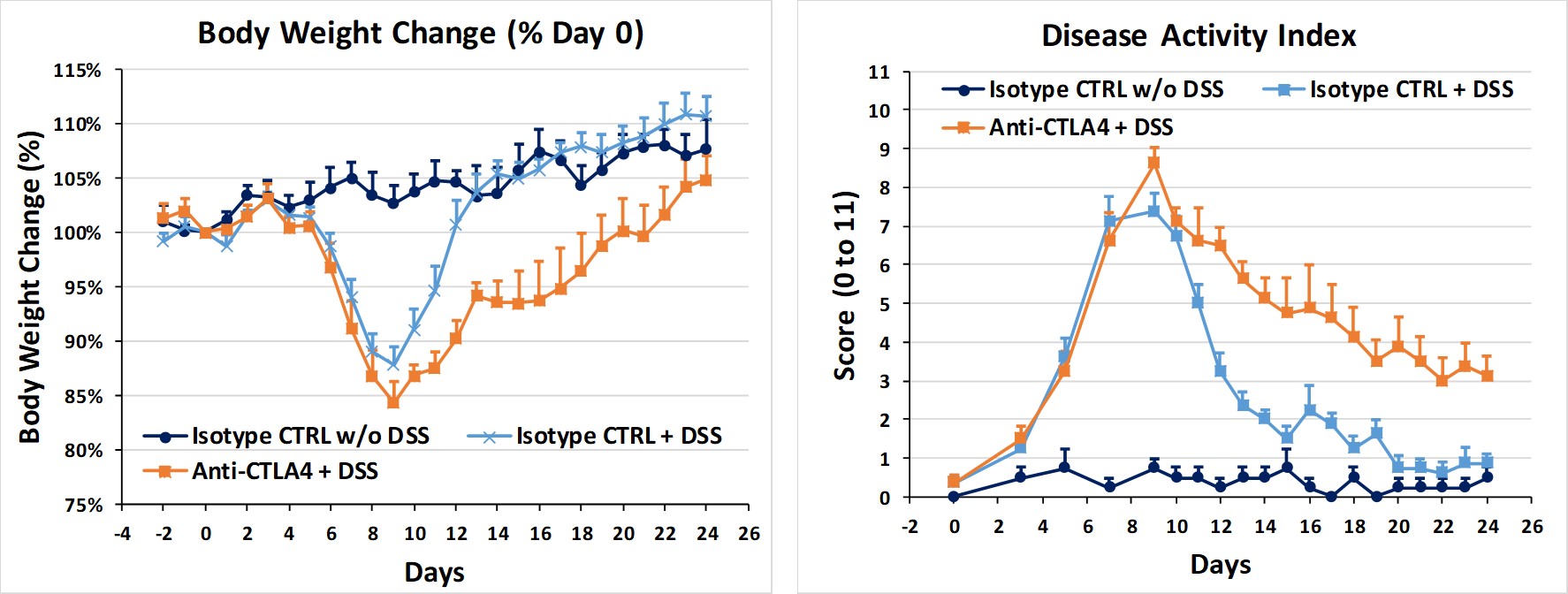


IBD models for preclinical research
Inflammatory Bowel Diseases (IBD) are a group of chronic inflammatory diseases affecting the gastrointestinal tract, among which the most prominent ones are ulcerative colitis and Crohn’s disease, affecting millions of people worldwide. Large numbers of preclinical candidates have been evaluated, but few have reached the clinic, and even fewer have reached the market. Robust preclinical mouse models of IBD are essential to understand disease mechanisms, evaluate therapeutic efficacy, and accelerate drug development.
Oncodesign Services offers a broad portfolio of colitis mouse models, including acute and chronic, and provides de novo development of new IBD models to support your research from early discovery to translational validation.
Whether you’re evaluating novel biologics, anti-inflammatory small molecules, or immune-modulating strategies, our in vivo and in vitro IBD models provide the translational bridge between discovery and clinical development.
Examples of available in vivo IBD models
- Acute DSS induced colitis model
- DSS + anti CLA4 antibody induced chronic colitis model of inflammatory resolution
- Acute TNBS colitis model
- Anti CD40 antibody induced colitis model
- IL-10 knockout mouse colitis model
- Chronic DSS colitis model
- AOM-DSS induced colitis associated cancer model
- T cell transfer model of colitis
Oncodesign Services also supports development of custom-made models in order to adapt to your scientific needs.
Key readouts & Biomarkers
- Clinical Scoring: Daily “Disease Activity Index (DAI)” (weight loss, stool consistency, rectal bleeding, colon length)
- Tissue Analysis: H&E and Alcian Blue-PAS stained colon sections for assessing epithelial erosion and healing, crypt architecture and goblet cell depletion
- Molecular Profiling: qRT-PCT/dPCR for key inflammatory mediators (TNFα, IL1β, IL6, CXCL10), STAT3 activation via IHC, and cytokine multiplex assays (IL17A/F, IFNγ)
- Cellular & Biomarker Readouts: flow cytometry for profiling immune infiltrates (Th1, Th17, Tregs, neutrophils, monocytes), human cell subsets in HIS mice (hCD45+, hCD4+, hCD8+), serum and fecal biomarker quantification (calprotectin, LCN-2) and PK/PD assessment when application
At Oncodesign Services, we do more than provide preclinical IBD models, we help you choose the right one, adapt it to your project, and generate meaningful data that drive decisions. Whether you’re exploring a new mechanism or advancing a lead candidate, our team is here to support you at every step.
Selection of Case studies for IBD mouse models
#1 DSS-Induced Acute Colitis
DSS is added to drinking water, over a 7-day treatment protocol. Tacrolimus (FK-506 immuno-suppressor) partially limits the evolution of the disease, as seen by improved DAI. Untreated animals display increased spleen size and weight at D7, and colon shortening.
Tacrolimus limits spleen inflammatory cell accumulation. Cytokine expression can be measured by qRT-PCR, and a classic inflammatory profile is typically observed, with elevated IL-1α, IL-1β and IL-6.
| Score | Body weight loss (%) | Stool consistency | Blood in feces |
| 0 | 0 | Normal | Absence |
| 1 | 1-5 | Soft | Hemoccult + |
| 2 | 6-10 | Very soft | Hemoccult ++ |
| 3 | 11-15 | Diarrhea | Bloody |
| 4 | >15 | Severe diarrhea |


#2 DSS+ Anti-CTLA4 Antibody-induced Chronic Colitis Model
Immuno-oncology approaches are promising new cancer treatments, but a number of unfortunate side effects need to be managed clinically. These typically result from hyper-activation of the immune system, which can affect the gut, skin, liver or endocrine glands. Over 1/3 of patients receiving the anti-CTLA4 antibody Ipilimunab report colitis symptoms, for example.
This same antibody is used by Oncodesign Services to create a chronic colitis model by combining the antibody with DSS as a standard colitis inducer. Mice typically recover from the DSS-induced colitis after DSS removal on D7, but anti-CTLA4 treatment delays the recovery phase, mimicking chronic colitis and allowing for the evaluation of compounds aiming at decreasing recovery time after an IBD crisis.


